Content warning
This story may contain sensitive material or discuss topics that some readers may find distressing. Reader discretion is advised. The views and opinions expressed in this story are those of the author and do not necessarily reflect the official policy or position of Vocal.
Dominating the Seas: The Naval Supremacy of 3M Series Kalibr Cruise Missiles
AirPra
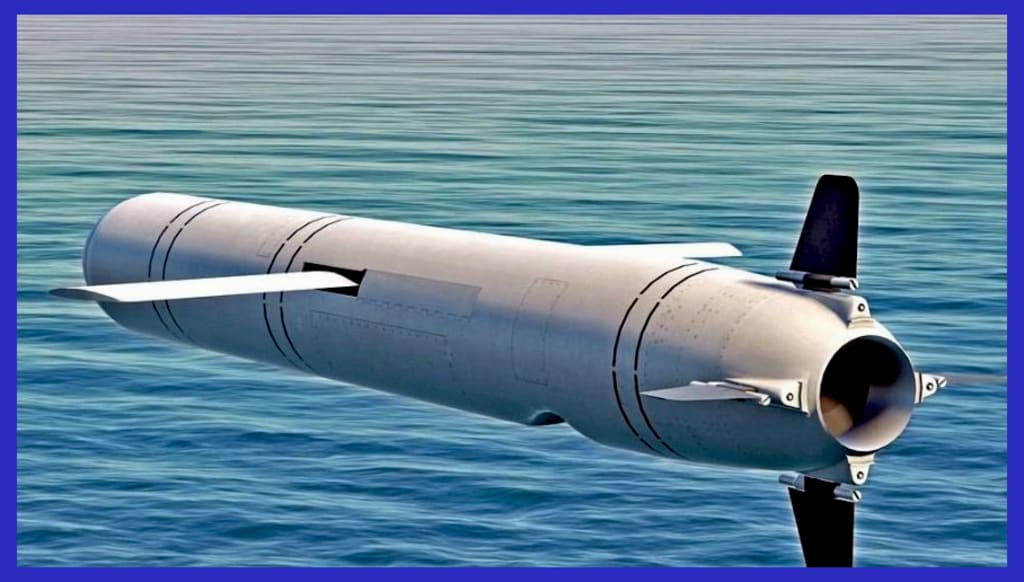
From the Russian inventory, an In-depth Analysis of 3M Series Kalibr Cruise Missiles reveals their remarkable characteristics as advanced, long-range, precision-strike weapons primarily designed for launch from naval platforms, including submarines, surface ships, and coastal defence systems. These missiles have garnered significant attention and acclaim due to their exceptional versatility, unwavering accuracy, and their extensive capability to engage a wide range of targets. Operating under the NATO reporting names SS-N-27 Sizzler and SS-N-30A, this family of Russian cruise missiles has been ingeniously developed by the prestigious NPO Novator Design Bureau.
Among the well-known variants, the 3M-14 Kalibr-K stands out as it is predominantly utilized by submarines and boasts an estimated range of 2,500 kilometres (1,553 miles). This impressive range empowers the Russian Navy to effectively strike targets located deep inland throughout Central/Western Europe. This family of cruise missiles, similar to the American Tomahawk, first came into service in 1994. The range of subsonic versions is larger than that of supersonic ones. Additionally, some versions incorporate a second propulsion stage that initiates a supersonic sprint in the terminal approach to the target, thereby reducing the time available for the target's defence systems to react.
The missile possesses the capability to carry either a thermonuclear warhead or an explosive payload weighing up to 500 kilograms (1,100 lb). These missiles are frequently launched in salvos, which involve firing multiple missiles simultaneously. This strategic approach allows for coordinated attacks, significantly increases the likelihood of target destruction, and poses challenges to enemy defences. The 3M series Kalibr missiles employ a combination of guidance systems to ensure accurate targeting. They utilize inertial navigation systems, satellite guidance, and mid-course updates to adjust their trajectory and reach the intended target. Some variants may also incorporate terminal active radar homing or electro-optical seekers to enhance precision during the final stages of flight.
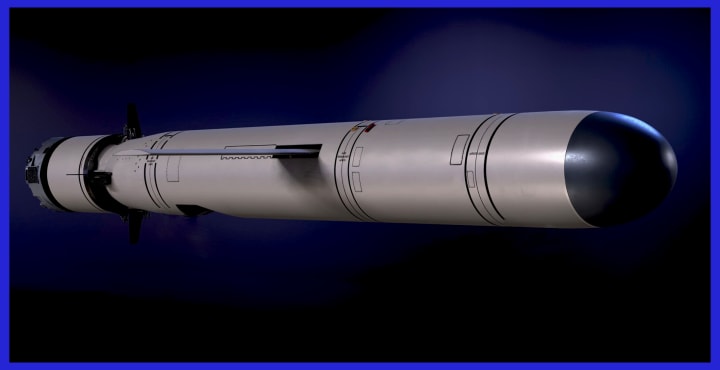
The Concept Behind the Development of the 3M Series Kalibr Cruise Missiles:
The development of the 3M series Kalibr cruise missiles began in the late 1990s by the Novator Design Bureau, with the goal of creating versatile and effective naval cruise missiles for the Russian military. These missiles incorporated advanced technologies, such as reduced radar cross-section and low observable characteristics, enhancing their ability to evade enemy defences. Russia plans to deploy KALIBR capability on newly designed submarines, corvettes, frigates, and larger surface ships, providing even modest platforms with significant offensive capability.
With the land attack missile, these platforms can engage distant fixed-ground targets using conventional warheads. Extensive testing and evaluation were conducted to verify the performance and reliability of the 3M series Kalibr cruise missiles, including land-based and sea-based tests to assess flight characteristics, range, accuracy, and effectiveness against various targets.
Over time, the development efforts resulted in the production of different variants of the 3M series Kalibr cruise missiles, each optimized for specific launch platforms and mission requirements. These variants included versions for submarines, surface ships, coastal defence systems, and even air-launched variants for deployment on Russian strategic bombers.
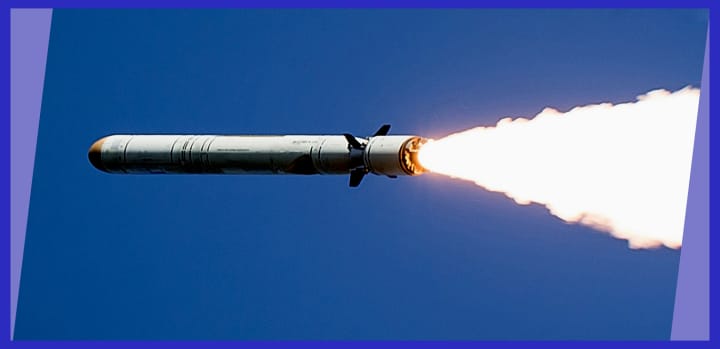
An In-Depth Analysis of the Kalibr Cruise Missile Design:
The Kalibr cruise missile design is a state-of-the-art sophisticated system of the latest generation that incorporates various technological advancements to achieve its capabilities.
Airframe and Propulsion: The Kalibr cruise missile features a streamlined airframe designed to minimize drag and increase aerodynamic efficiency. The sleek cylindrical shape reduces radar cross-section. The airframe is typically constructed using composite materials to ensure strength while keeping the overall weight low. The missile is propelled by a multi-stage solid-fuel rocket motor for the 91RE1/RTE2 versions, which provides high thrust and acceleration, and a turbojet engine for the 3M-54/E/TE/E1/TE1, 3M-14/E/TE versions. The propulsion system allows the missile to achieve the required speeds for efficient cruising and manoeuvring during flight.
Guidance and Navigation: The Kalibr cruise missile utilizes an advanced guidance and navigation system to ensure precise targeting. Some variants may incorporate terminal guidance capabilities, such as active radar homing or electro-optical seekers, to enhance accuracy during the final stage of the mission. When approaching the intended target, both the Russian domestic variant ( 3M54T / 3M54K ) and export variants ( 3M54TE / 3M54KE ) are capable of achieving supersonic speeds ( Mach 3.0 ) while maintaining sub-sonic speeds. These missiles also possess exceptional manoeuvrability, executing high-angled defensive manoeuvres that deviate from the typical linear flight path observed in other anti-ship cruise missiles.
To autonomously navigate during flight, the missile relies on an inertial navigation system (INS). This INS employs gyroscopes and accelerometers to accurately measure changes in velocity and direction. Additionally, the missile incorporates terminal active radar homing. Furthermore, satellite-based navigation systems like GLONASS, the Russian global navigation satellite system, are employed for precise positioning and mid-course phase updates. The incredible terminal speed of these missiles poses a significant challenge for modern defence systems attempting to repel them, and their remarkable precision renders them highly lethal against mobile targets such as destroyers.
Versions and Launch Platforms: The missile comprises five modular versions: two for anti-shipping purposes, one for land attack, and two for anti-submarine operations. The design of the missile allows for shared components between surface-launched and submarine-launched variants, although each missile possesses distinct elements, such as the booster. When launched from a surface ship, the missile can utilize a vertical launching system (VLS) and is equipped with a booster featuring thrust vectoring capability. Conversely, when launched from a submarine's torpedo tube, the missile does not require such an addition but instead employs a conventional booster. As for the air-launched version, it is enclosed within a container that is subsequently released as the missile launches, effectively separating from the container.
The 'Club-K' is a Russian container complex of missile weapons that are housed in standard 20- and 40-foot sea containers. This system is specifically designed to engage surface and ground targets effectively. The versatile nature of the complex allows it to be installed on shorelines, vessels of various classes, rail platforms, and trucks. It is essentially a modified version of the Kalibr missile system. In 2010, a variant of the Club-K was introduced, which features a clever disguise as a shipping container.
This containerized variant can be easily placed on trucks, trains, or merchant vessels. The Club-K in a shipping container form was publicly showcased for the first time at the MAKS 2011 air show. By incorporating the launcher system within a standard shipping container, the missiles can be transported and stored discreetly without raising suspicion. This covert capability poses significant challenges for pre-emptive strikes against the launcher, as its true nature and intent remain well-concealed.
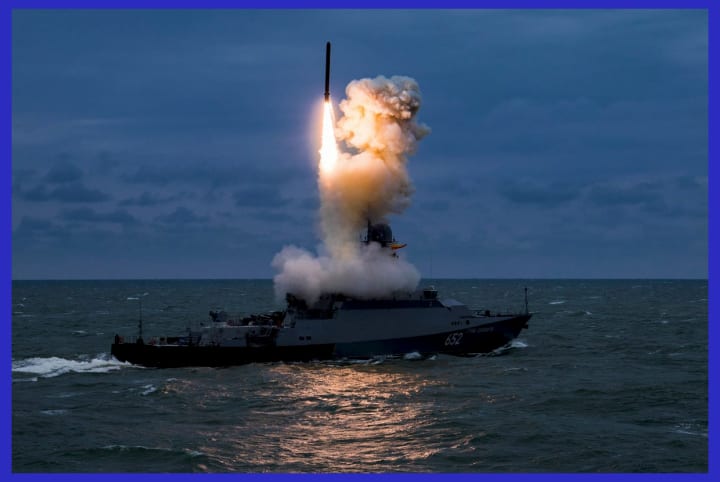
Naval application: The Kalibr missiles are launched from various Russian submarines, including the Kilo class, Lada class, Amur class, Akula class, Yasen class, and Borei class. Additionally, low displacement platforms equipped with the Kalibr system include the Russian Gremyashchy class, Buyan-M class, the second batch of Steregushchy class corvettes, and the Karakurt class. Russian frigates of the Gepard, Admiral Gorshkov, and Admiral Grigorovich classes are also capable of carrying these missiles. Furthermore, the Indian Talwar class frigate serves as another ship-borne launch platform for the Club missile system. There are indications that a variant for air launch may be developed to arm the Tu-142s, which are currently deployed by the Russian Navy.
Range and Performance: The range of the 3M series Kalibr cruise missiles varies depending on the specific variant and launch platform. The widely recognized variant, known as the 3M-14/3M-14T, boasts an estimated range of approximately 1,500 to 2,500 kilometres ( 932 to 1,553 miles ). This particular variant finds primary use on surface ships and submarines. On the other hand, the 3M-54 Kalibr and 3M-54E Kalibr variants also referred to as Klub, possess a range of around 220 to 300 kilometres ( 137 to 186 miles ) and are typically deployed for land-attack missions.
According to a state television news broadcast on 11th October 2015, the production of the Kalibr-PL missile, a submarine-specific derivative of the 3M14TE Kalibr-NK, commenced in 2012. This version boasts specifications including a top speed of Mach 3, a range of 4,000 kilometres, and the ability to operate in various environments: air, land, water, and underwater. The missile has a minimum operating height above the terrain of 10 meters, with an average height ranging from 20 to 50 meters ( up to 1000 m ).
It features automatic terrain following and in-flight controllability, allowing it to perform 147 or more manoeuvres in any direction. The design bureau has enhanced the targeting system of the Kalibr cruise missile, enabling it to execute time-sensitive attacks over extended distances from both ships and submarines.
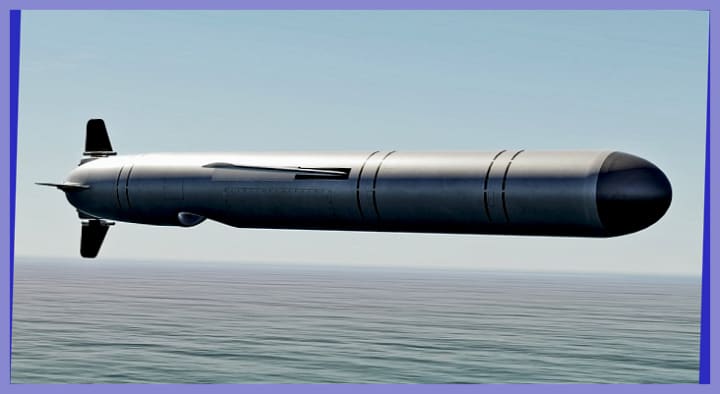
Warhead placement: The 3M series Kalibr missiles are equipped with various types of warheads depending on their intended targets. Anti-ship variants, like the 3M-54E, commonly utilize a high-explosive fragmentation warhead specifically designed to cause substantial damage to surface ships. Land-attack variants, such as the 3M-14, utilize a conventional warhead with an estimated weight of approximately 450 kilograms (992 pounds). Moreover, the 3M-14/3M-14T versions can be equipped with either a thermonuclear or conventional warhead in domestic land-attack variants.
Testing and Evaluation: Since its inception in 1994, the Kalibr cruise missile has undergone extensive testing and evaluation during the development and production phases. The testing process encompasses ground-based trials, flight tests, and live-fire exercises to validate its performance, reliability, and accuracy. The missile's flight characteristics, range, accuracy, and lethality are assessed under various operational conditions and scenarios. Notably, during the Russian military intervention in the Syrian civil war, the Kalibr missile was utilized to neutralize key targets, providing an opportunity to thoroughly evaluate its overall performance and missile characteristics.
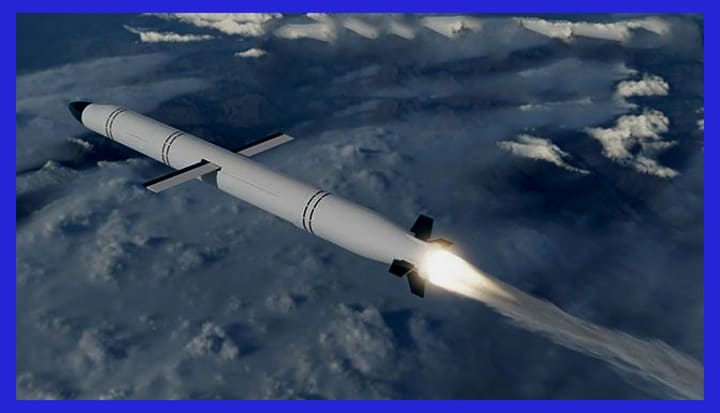
Variant Configurations: Exploring the Different Versions of the 3M Series Kalibr Cruise Missiles
The 3M series Kalibr cruise missiles have various variant configurations that cater to different launch platforms and mission requirements. Let's explore the different versions of the 3M series Kalibr cruise missiles in more detail:
Russian variants _
3M54K: The 3M54K is a submarine-launched anti-shipping variant designed specifically for deployment by the Russian Navy. It is widely known and extensively used. The missile has a length of 8.22 meters ( 27.0 feet ) and is equipped with a 200 kg (440 lb) warhead. Its estimated range is between 550 and 660 kilometres ( 340-410 miles ). The 3M54K is a sea-skimmer missile that maintains a final stage flight altitude of 4.6 meters ( 15 feet ) and achieves a supersonic terminal speed of Mach 2.9 ( 3,550 km/h; 2,210 mph ).
3M54T: The 3M54T is an anti-shipping variant deployed by the Russian Navy on surface ships. It is launched using a Vertical Launch System (VLS) and features a thrust vectoring booster. The missile measures 8.9 meters (29 feet) in length. It shares the same warhead weight and performance characteristics as the 3M-54K variant.
3M14K (SS-N-30A): The 3M14K is an inertial guidance land attack variant deployed by the Russian Navy. This submarine-launched weapon has a base length of 6.2 meters (20 feet) and is equipped with a 450-kilogram (990-pound) warhead. With a range of 2,500 kilometres (1,600 miles), it enables the Russian Navy to target locations throughout Central/Western Europe from beyond the GIUK gap. The missile achieves a subsonic terminal speed of Mach 0.8.
3M14T: The 3M14T is the inertial guidance land attack variant deployed by the Russian Navy. It is a surface ship-launched missile with a vertical launching system (VLS) and a thrust vectoring booster. The missile has a basic length of 8.9 meters (29 feet), and its warhead weight and other performance characteristics are identical to those of the 3M14K.
Kalibr-M: The Kalibr-M is a new version of the Kalibr missile system that features a larger warhead and an extended range of up to 4,500 kilometres (2,796 miles). Currently, the ship-launched, submarine-launched, air-launched, and land-launched versions of the Kalibr-M are under development.
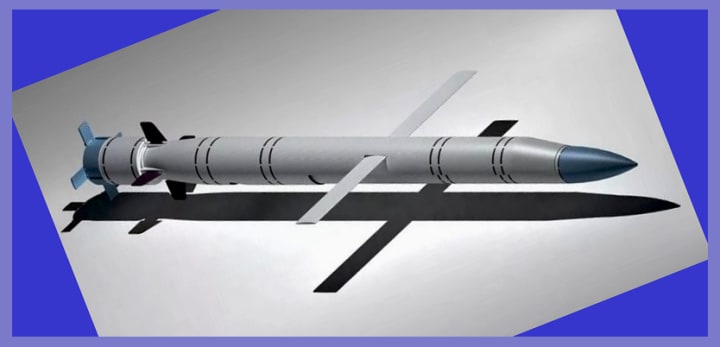
Export Variants: The export models are designated under the Club category.
Club-S _
3M-54E: is the submarine-launched anti-shipping variant. It has a basic length of 8.2 m (27 ft) and is equipped with a 200 kg warhead. The range of this variant is 300 km. It operates as a sea skimmer, reaching a supersonic terminal speed of Mach 3.0 and maintaining a flight altitude of 4.6 meters (15 ft) during its final stage.
3M-54E1: is a submarine-launched anti-shipping variant. It has a basic length of 6.2 m (20 ft) and is equipped with a 200 kg (440 lb) warhead. The range of this variant is 300 km (190 mi). It operates as a sea skimmer, with a subsonic terminal speed of Mach 0.8.
3M-14E: is an inertially guided land attack variant launched from a submarine. It has a basic length of 6.2 m (20 ft) and is equipped with a 450 kg (990 lb) warhead. The range of this variant is 300 km (190 mi). It operates at a subsonic terminal speed of Mach 0.8.
Club-N _
3M-54TE: is a surface vessel-launched anti-shipping variant equipped with VLS (Vertical Launch System) and a thrust vectoring booster. Its basic length is 8.9 m. It shares the same warhead weight and performance characteristics as the 3M-54E variant. However, its range is shorter compared to the 3M-54. It operates as a sea skimmer with a supersonic terminal speed and a flight altitude of 15 feet (4.6 m) during its final stage. At that stage, it achieves a speed of Mach 3 and has a range of 220 km (140 mi) at supersonic speed.
3M-54TE1: is a surface ship-launched anti-shipping variant equipped with VLS (Vertical Launch System) and a thrust vectoring booster. It has a basic length of 8.9 m (29 ft), and its warhead weight and other performance characteristics are identical to the 3M-54E1 variant. It operates as a sea skimmer with a subsonic terminal speed of 0.8 Mach.
3M-14TE: is an inertially guided land attack variant. It is launched from a surface ship with VLS (Vertical Launch System) and features a thrust vectoring booster. The basic length of the missile is 8.9 m (29 ft), and its warhead weight and other performance characteristics are identical to the 3M-14E variant. The missile operates at a subsonic terminal speed of 3.0 Mach, with a range of 300 km (190 mi) at supersonic speed.
Club-T _
The land-based anti-ship variant 3M-54E2 and the land-attack variant 3M-14E1 are part of a self-propelled missile system designed for coastal defence. Both missile variants in the system arsenal have a weight of 1,700 kg and are equipped with a 450 kg warhead. They are capable of achieving a flight speed of 240 m/s. According to the manufacturer, NPO Mash, when operating in land-attack mode, the system has a Circular Error Probable ( CEP ) of 50 m in the export version.
Club-A _ ( It is intended to be launched from bombers such as Tu-22M3, Tu-160, and Tu-95 )
The 3M-54AE is an air-launched anti-ship derivative of the missile. It consists of two phases and achieves supersonic speed at the end. The missile weighs 1950 kilograms and is equipped with a 200-kilogram warhead. It has a range of 300 kilometres.
The 3M-14AE is an air-launched land attack variant specifically designed for aerial operations. It operates at a subsonic speed and utilizes INS+satellite guidance for precise targeting. The missile has a length of 6.2 meters and weighs 1400 kilograms. It is equipped with a 450-kilogram warhead and has a range of 300 kilometres.
These variant configurations of the 3M series Kalibr cruise missiles offer adaptability and versatility for various launch platforms and mission scenarios. They provide Russia with the capability to engage a wide range of targets, including both land-based and surface targets, from submarines, surface ships, and potentially strategic bombers. It is worth noting that the Kalibr missile family may include additional versions or upgraded configurations that have been developed or may be developed in the future. These variants reflect the continuous efforts of the Russian military to enhance its cruise missile capabilities and maintain a credible strategic deterrent.
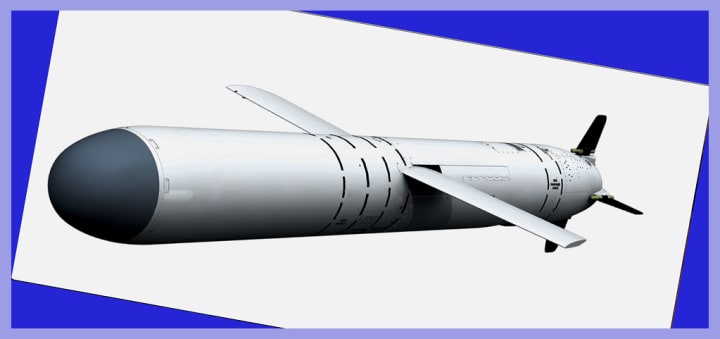
Operational Triumphs of the Kalibr Cruise Missile:
Combat Operations in Syria: The Kalibr cruise missile made its combat debut during the Russian military intervention in Syria from 2015 until 2018. Russian naval vessels, including submarines and surface ships in the Caspian and Mediterranean Seas, launched Kalibr missiles against targets in Syria. The missiles were used to strike various targets, including terrorist infrastructure, command centres, ammunition depots, and militant positions. The Kalibr cruise missiles showcased their precision and long-range capabilities, enabling Russia to effectively strike targets in Syria from significant distances.
Combat Operations in Ukraine: February 2022 - Present (June 2023): Kalibr cruise missiles have been extensively utilized by Russian forces since the commencement of the 2022 Russian invasion of Ukraine on 24th February 2022. The initial offensive reportedly involved a minimum of 30 cruise missiles, which targeted command and control centres, air bases, and air defence batteries. The missiles were likely launched from the Russian Black Sea Fleet's corvettes, frigates, and Kilo-class submarines. It is estimated that this resulted in the destruction of approximately 80% of Ukraine's energy sector as of 2023.
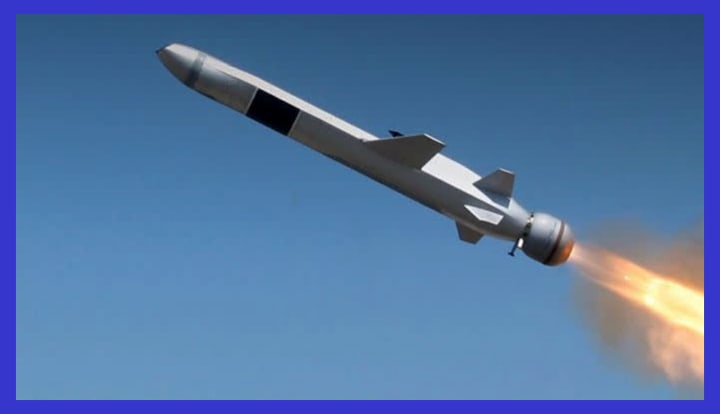
Technical Specifications Of The Kalibr Cruise Missile:
Weight: the Kalibr cruise missile varies across different variants, ranging from 1,300 kg to 1,780 kg to 2,300 kg
Length: Varies on the variant, from 6.2 m to 8.9 m
Diameter: 21 inches
Wingspan: 8 ft ( 2.43 m )
Warhead: high explosive (HE) or thermonuclear warhead weighing between 400–500 kg
Detonation: Various impact fuze options
Engine: Missile utilizes a multi-stage solid-fuel rocket booster to achieve the required altitude and speed. Afterwards, a turbojet engine is initiated for variants such as 3M-54/E/TE/E1/TE1 and 3M-14/E/TE. However, the 91RE1/RTE2 versions rely solely on solid-fuel rockets for propulsion
Range: 91RE1: 50 km, 3M-54/3M-54T: 660 km (domestic anti-ship version, estimate)
3M-14/3M-14T: 1,500–2,500 km (domestic land-attack version, estimate)
3M-54E (export anti-ship version): 220 km
3M-54E1/3M-14E (export anti-ship version): 300 km
Kalibr-M (under development): 4,500 km
Flight altitude: 50–150 meter AGL(above ground level) And 20 meter over water
Flight ceiling: max 1,000 meters AGL
Speed: Varies on the variant, from 0.8–2.5–3.0 Mach
Guidance system: Inertial guidance plus terminal active radar homing, by GPS
Launch Platform: naval ships, submarines, containers, bombers & TEL( transporter erector launcher)
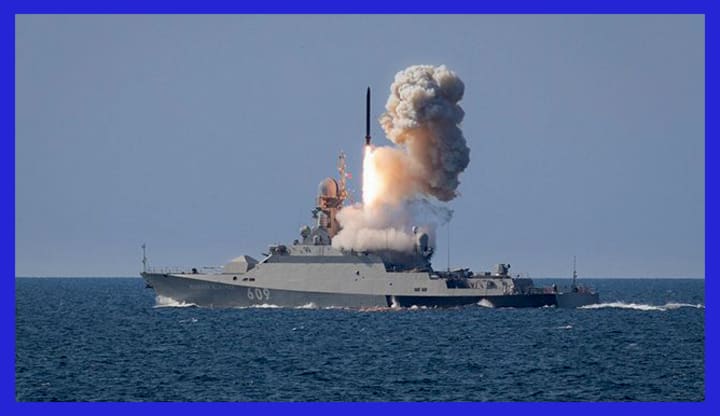
In conclusion, the Kalibr cruise missile is a highly advanced weapon system that has demonstrated remarkable operational success. It incorporates cutting-edge features such as a streamlined airframe, efficient propulsion, advanced guidance systems, and versatile warhead options. The missile can be launched from submarines, surface ships, and potentially strategic bombers, offering operational flexibility in diverse mission scenarios. In addition to Russia, countries such as Algeria, Vietnam, China, Iran, and India also operate this system.
During combat operations in Syria, the Kalibr cruise missile showcased its precision, long-range capabilities, and effectiveness against various targets. Its extended range and stealthy characteristics enhance its ability to engage targets discreetly. With reduced collateral damage, the missile serves as a formidable tool for power projection, deterrence, and precise strikes. The Kalibr cruise missile has become a critical asset in Russia's naval strike capabilities, underscoring the ongoing advancements in missile technology for modern warfare.
About the Creator
Prajesh Majumdar
Hi there, I'm Prajesh, the creator of airpra.com
The site is dedicated to nurturing a community of individuals with a keen interest in exploring the intricate aspects of defence equipment and related news.
Enjoyed the story? Support the Creator.
Subscribe for free to receive all their stories in your feed. You could also pledge your support or give them a one-off tip, letting them know you appreciate their work.






Comments
There are no comments for this story
Be the first to respond and start the conversation.